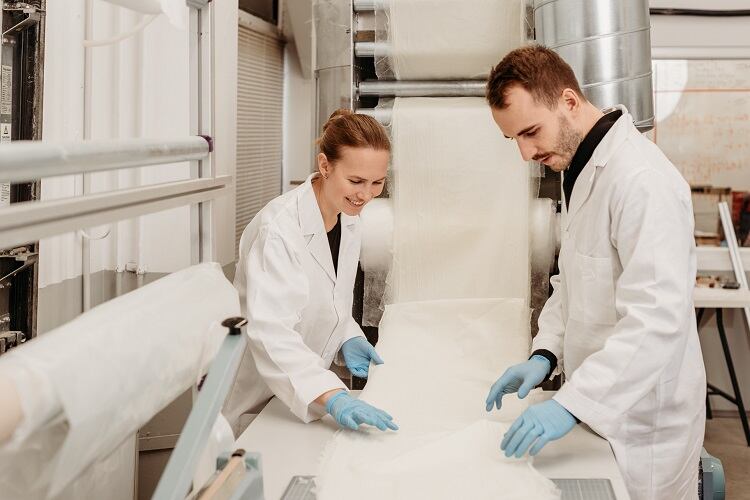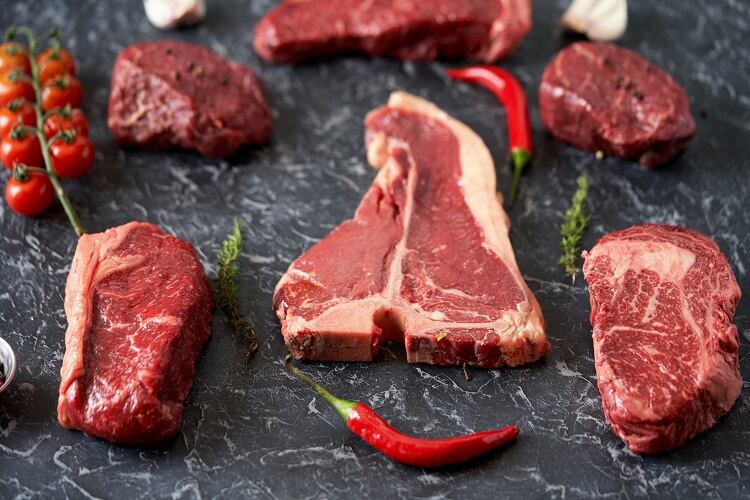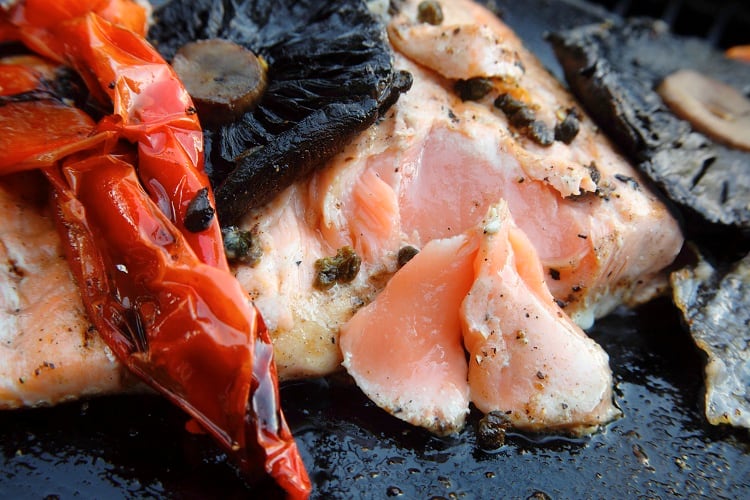The ‘main challenge’ for cultured meat companies, according to entrepreneur Märt-Erik Martens, is a lack of ‘good scaffolding solutions’ on the market.
Estonian start-up Gelatex, which Martens co-founded and heads up as CEO, is working to change that. Established in 2016, Gelatex pivoted into the cultured meat space last year with scaffolding technology it claims is both scalable and cost-efficient.
Avoiding cell-based ‘mush’ with scaffolds
In cell cultivated meat production, scaffolding helps create structure and texture by facilitating muscle, fat, and connective tissue development. Essentially, cells must be transferred to a scaffold to produce structure and thick meat products.
“With all cultured meat products, it is important to provide a suitable environment for the cells to proliferate and differentiate,” explained Martens. “Scaffolds mimic the structure of an extracellular matrix (ECM), which is very important to grow tissue outside of a host.”
Without a scaffold, cell-based companies would ‘end up with mush’, which Martens described as ‘an unstructured mass of cells that is nothing like meat’.
“The aim of all cultured meat companies is to ultimately have a structured meat product that would be indistinguishable from animal-based meat. Scaffolds enable this to happen.”
Popular scaffolds on the market are made from electrospun and hydrogel solutions, which Gelatex suggested are prohibitively expensive: “If the current popular manufacturing solutions persist, lab-grown meat will only be affordable for the richest of enterprises and individuals.”
Ticking all the boxes
The start-up claims its scaffolds are 90% cheaper than electrospun and hydrogel alternatives on the market.
“We are working with plant-based polymers…Our technology allows the conversion of different polymers into nanofibers,” Martens explained.
“For cultured meat, the main criteria are that the raw materials need to be edible, plant-based, and cost-effective.”
Gelatex suggests its solution ticks all those boxes, and is compatible with beef, pork and chicken cells, as well as fish and crustaceans.

Scaffolding technology needs to be edible because it ‘partially’ ends up in the final cultivated meat product, Martens elaborated. “During the maturation phase, when the tissue is formed, the cells partially degrade our scaffold and secrete their won ECM at the same time. This is the reason why the scaffold also needs to be edible.”
Concerning scale, Gelatex suggested this was a fundamental consideration from the get-go. “Our core technology relies on manufacturing these materials on a scale. We have fully operational semi-industrial machinery up and running which can produce five times more of the same material per unit time compared to the largest electrospinning unit (that costs €8m) commercially available,” Martens told FoodNavigator.
“We are currently in the process of building an industrial unit that would deliver even three times the throughput compared to our existing machine.
“From there on, it’s about multiplying the industrial machinery to deliver the quantities needed.”
€1.2m seed investment
By leveraging Gelatex’s scaffolding, the company says ‘affordable and scalable’ manufactured cell-cultured meat could ‘soon turn into reality’.
The company has recently announced €1.2m in seed funding, which it hopes will ‘annul those [price] stigmas’ in the future. The round was led by Change Ventures and Crosslight Partners.
Emphasising that the seed round is an ‘early milestone’ for the start-up, Martens said there are already multiple reasons to be proud of Gelatex’s achievements.
“We are running multiple pilot projects with eight out of 10 of the world’s leading cultured meat producers. We have run enough tests to know that our cheaper nanofibrous materials can make a true difference in the texture of cell-cultured meat.”
Currently, one kilogram of scaffolding material costs about €100,000, said the CEO. But today, Gelatex is already able to produce nanifibrous scaffolds at a price less than €1,000 per kilogram ‘easily’.
“If we stay true to our ambitions and keep scaling our technology, it will cost only €40 in less than five years. €20 in less than 10 years. This is less than €1 of scaffold her kg of meat.
“These high-performance materials have never been as accessible as they are today, because of our technology.”



